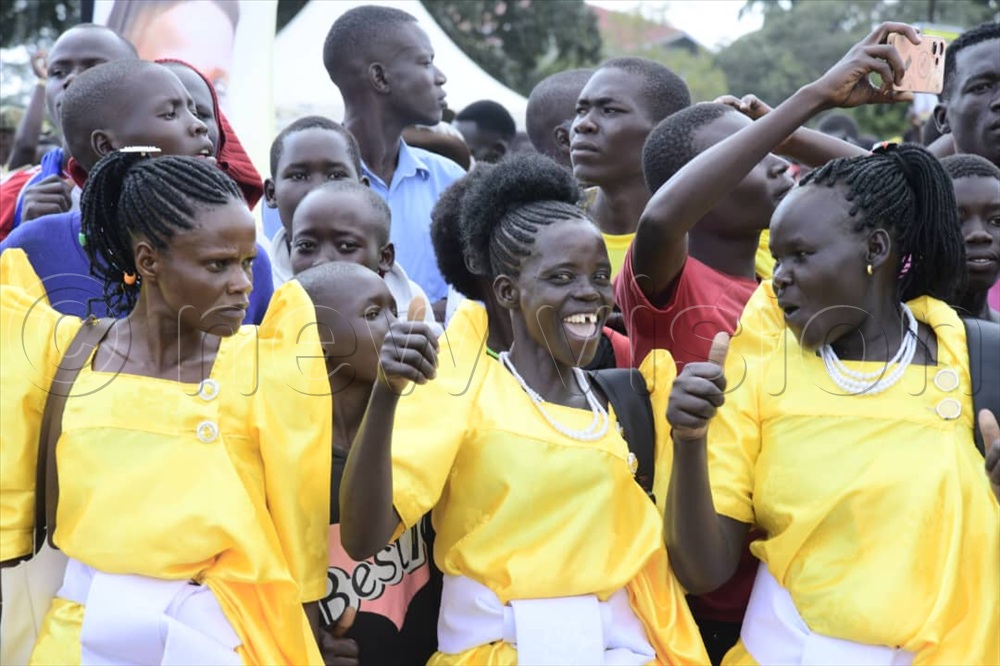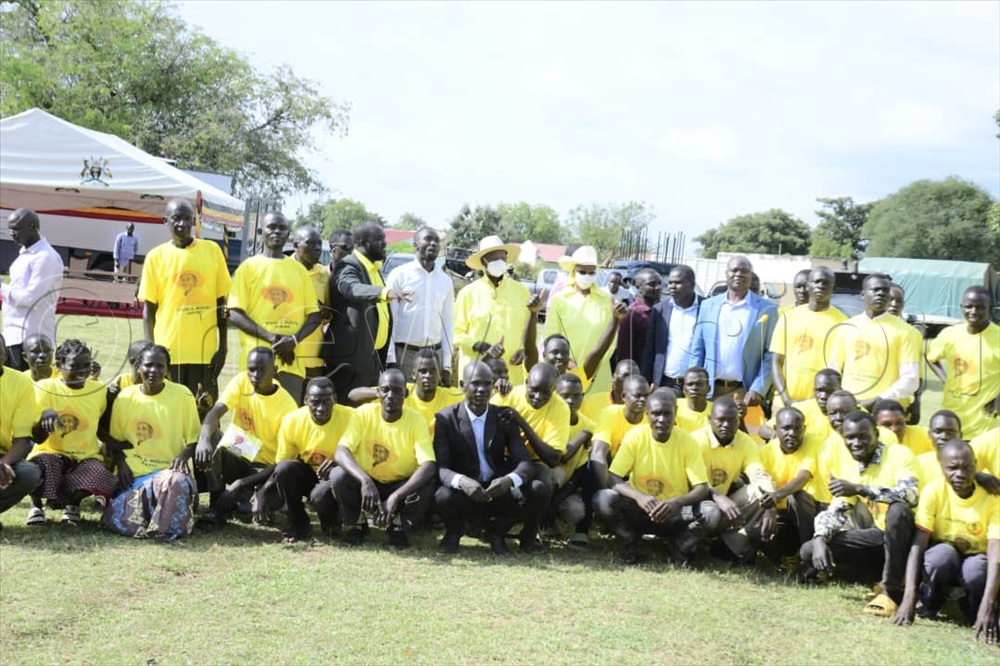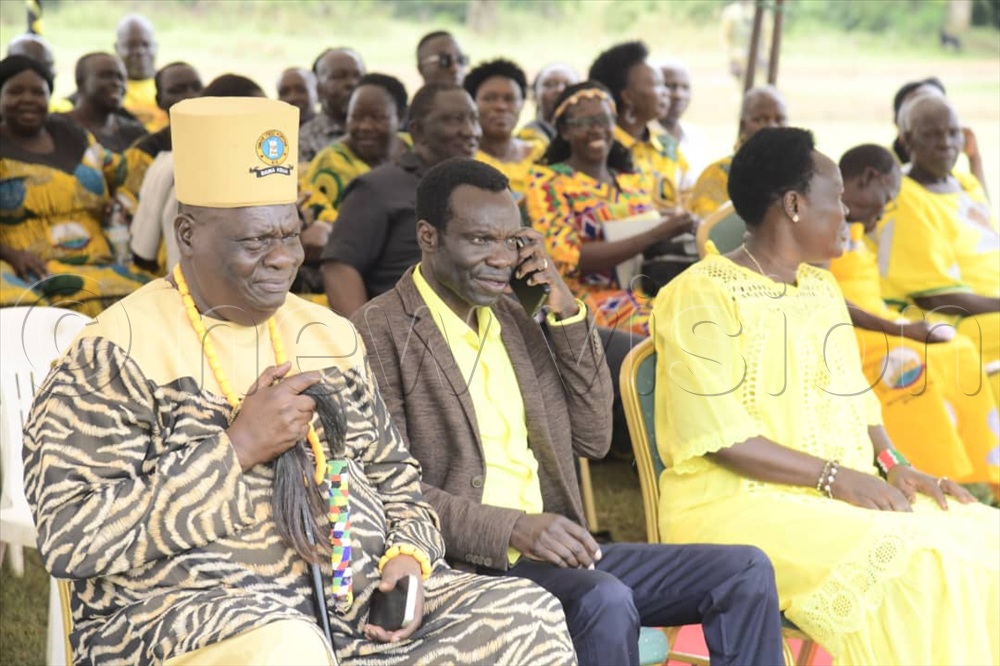Museveni reveals turning point in war against LRA
“In Anyara, Kalaki district, we killed one of the notorious rebels called Tabuley. I want to thank the Arrow Boys who joined me in bringing peace here,” Museveni, who is the National Resistance Movement party presidential candidate, told a mammoth crowd.
President Yoweri Museveni noted that without peace, no development can take place. (Photos by Eddie Ssejjoba and Simon Peter Tumwine)
_______________
President Yoweri Museveni has said that defeating the Lord’s Resistance Army (LRA) in Apopong village, Obalanga sub-county, Kapelebyong district was a turning point in their two-decade war against the notorious rebels in northern Uganda.
He was addressing a campaign rally for re-election in the 2026 general election at Amuria Senior Secondary School playground in Amuria town council, Amuria district, on November 1, 2025.
Kapelebyong, which is in the Teso sub-region, was carved out of Amuria in July 2018.
“You people of Amuria and Teso are witnesses to what happened here. There is a place called Apopong where the UPDF (Uganda People’s Defence Forces) destroyed Kony’s army. That was the turning point of the war against Kony,” Museveni said.


The LRA insurgency started in the Acholi sub-region in 1987 under the command of Joseph Kony and spilled over into Teso in June 2003, bringing death and destruction to many areas. The rebels relied heavily on the abduction of children for use as soldiers, and atrocities against the civilian population were commonplace.
“In Anyara, Kalaki district, we killed one of the notorious rebels called Tabuley. I want to thank the Arrow Boys who joined me in bringing peace here,” Museveni, who is the National Resistance Movement party presidential candidate, told a mammoth crowd.
He promised to look into the issues of the Arrow Boys, who were a local self-defence militia in Uganda, particularly in Teso, formed in the early 2000s to fight the LRA.
The LRA later moved its campaign of terror to DR Congo, South Sudan and the Central African Republic after being defeated by the UPDF.



The Arrow Boys were composed of ex-soldiers and local residents who used basic weapons such as bows and arrows to protect their communities from LRA attacks. Their efforts helped drive the LRA out of the region and led to the rescue of many abducted children.
Museveni noted that without peace, no development can take place. “That is why we always emphasise peace first. It’s the reason you can now talk of roads, schools, hospitals, and electricity,” he said.
More about LRA
The LRA rebels relied heavily on the abduction of children for use as soldiers, and atrocities against the civilian population were commonplace. During the conflict, cattle rustling led to increased poverty in the area, and some of the young people grew up in camps for internally displaced persons (IDPs), which led to interrupted transitions to adulthood.
After the conflict, many communities had reduced access to education and health services due to the absence of qualified staff. Infrastructure, such as roads and transport links, was also devastated.
Insecurity became a campaign issue for the opposition in the region during the 1996 and 2001 general elections. However, the return of peace in 2006 turned out to be Museveni’s masterpiece in the region.
Since 2011, the NRM government has been executing war recovery programmes through the Northern Uganda Social Action Fund (NUSAF) II and the Peace, Recovery and Development Plan (PRDP) II. NUSAF and PRDP are affirmative action programmes designed to rehabilitate northern Uganda.
Under these programmes, the government built tarmac roads, constructed classrooms and teachers’ houses, supplied desks, and sank boreholes, among other projects.